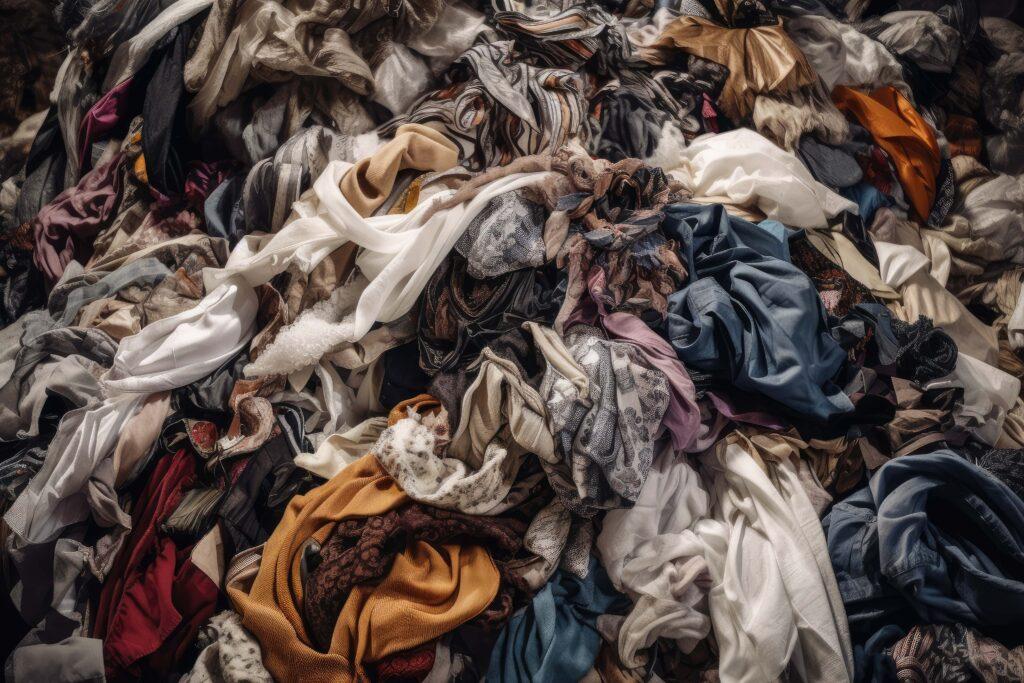Fashion is a form of self-expression that has been a part of human life for centuries. It refers to the popular styles and trends that people follow in clothing, accessories, and lifestyle choices.
Fashion plays a vital role in modern society as it reflects cultural, social, and economic changes. However, it is not without its problems. In this article we take a look at what problems does fashion cause by providing some insights.
Definition of Fashion
The term fashion is often used interchangeably with style. Although they are related concepts, fashion refers to the current trends in clothing and accessories that are widely accepted by society at a particular time while style refers to an individual’s personal expression through their clothing choices. Fashion can also refer to specific industries such as the high-fashion industry where designers create clothing lines for luxury brands or fast-fashion industry where new designs are produced quickly and inexpensively to keep up with the latest trends.
Importance of Fashion in Society
Fashion plays an essential role in society as it reflects cultural values and norms. It allows individuals to express themselves through their personal style, which can communicate social status, personality traits, political beliefs, or artistic expression.
Fashion also fuels economic growth through various industries such as textiles, manufacturing, retailing, marketing, advertising and media. The fashion industry provides employment for millions of people globally while generating billions of dollars in revenue every year.
What problems does fashion cause, an Overview of the Problems
Despite its importance in society today’s fashion industry has caused several problems ranging from environmental degradation to exploitative labor practices. The production process for textiles generates significant amounts of waste while contributing to climate change through high carbon emissions resulting from resource-intensive production methods. Additionally,the fast pace nature of current fashion trends leads consumers into patterns of overconsumption causing them financial strain while negatively impacting local economies This article will explore these issues in detail with an aim towards greater awareness about sustainable practices within the industry.
Environmental Problems Caused by Fashion
Fast Fashion and its Impact on the Environment
Fast fashion is a term used to describe the rapid production of cheap clothing in response to the latest fashion trends. This concept has revolutionized the fashion industry, but it has also had a significant impact on the environment. Fast fashion is characterized by its high energy consumption, excessive use of water, and the emission of greenhouse gases.
The production of fast fashion items requires an immense amount of energy. The plantations that produce cotton or other raw materials consume large amounts of water and electricity.
In addition, factories that make fast fashion items require even more energy to run their equipment. The combination of these factors means that the fast-fashion industry contributes significantly to global warming.
Textile Waste and Pollution Caused by the Fashion Industry
The textile waste generated by producing fast-fashion items is enormous. Millions of tons of unsold clothing end up in landfills each year, where they can take hundreds or thousands of years to decompose completely. Synthetic textiles like polyester are particularly problematic because they do not biodegrade quickly.
The dyes used in textile production can pose a significant environmental hazard as well. Many dyes contain toxic chemicals that can leach into groundwater supplies and harm both aquatic life and humans.
The Use of Non-Renewable Resources in Fashion Production
Fashion production also depends heavily on non-renewable resources like oil, which is used in synthetic fabrics such as polyester or nylon. These fabrics are popular for their affordability and durability, but they come at a cost to our environment since oil is a finite resource. Another non-renewable resource consumed frequently in fashion production is water.
Growing cotton for textile products requires vast amounts of water – up to 20,000 liters per kilogram! Additionally, most fabric dyeing processes require large quantities of freshwater.
Environmental problems caused by fashion are numerous and varied. Fast fashion’s impact on the environment is considerable, with textile waste and pollution posing a significant environmental hazard.
The non-renewable resources used in fashion production exacerbate this issue further. As a result, there is a growing need for sustainable practices within the fashion industry to reduce its ecological footprint.
Social Problems Caused by Fashion
Body Shaming and Unrealistic Beauty Standards Perpetuated by the Fashion Industry
The fashion industry is known for promoting unrealistic beauty standards and perpetuating body shaming. Models are often required to have a certain body type, which is unattainable for most people.
This leads to feelings of inadequacy and low self-esteem among those who don’t fit into these narrow standards. In addition, the use of Photoshop and airbrushing in advertisements creates an unattainable version of beauty that further perpetuates body shaming.
The impact of these unrealistic beauty standards can be seen in the rise of eating disorders, as well as a general dissatisfaction with one’s appearance. It’s important for the fashion industry to showcase diversity in body types and promote self-love and acceptance.
Exploitation of Workers in the Global Garment Industry
Another social problem caused by fashion is the exploitation of workers in the global garment industry. Many fashion brands outsource production to countries with low labor costs, such as Bangladesh or Vietnam, where workers are paid very low wages and work in poor conditions.
These workers often lack basic human rights such as fair pay, safe working conditions, or job security. In some cases they work long hours under dangerous conditions just to produce cheap clothing that eventually ends up on store shelves halfway around the world.
It’s essential for consumers to support ethical brands that prioritize fair labor practices throughout their supply chain. Additionally, governments should enforce stricter laws regarding worker rights within the garment industry.
The Negative Impact of Fast Fashion on Local Economies
Fast fashion has had a significant negative impact on local economies around the world. Large retail chains dominate markets with their low-priced clothing made abroad at cut-rate prices without regard for their environmental footprint or social impact.
As a result, small businesses and local manufacturers struggle to compete with the big brands, leading to a decline in job opportunities and economic growth. In addition, the overproduction of cheap clothing leads to a culture of overconsumption that is not sustainable.
It’s important for consumers to be mindful of their purchasing habits and support local businesses and ethical brands. Additionally, governments should provide support for small businesses and enforce regulations on fast fashion retailers.
The Financial Strain of Luxury Goods
Luxury goods have long been associated with wealth and status, but the high cost can also lead to financial strain for consumers. The pressure to keep up with the latest trends and maintain a certain image can result in overspending and debt. In fact, a survey by LendEDU found that over 40% of millennials have gone into debt to purchase luxury items such as designer clothing or accessories.
Additionally, the constant cycle of new collections and limited edition releases creates a sense of urgency among consumers, leading them to make impulsive purchases they may not be able to afford. This not only harms individuals financially but contributes to a culture of unsustainable consumption.
The Impact of Fast Fashion on Small Businesses and Local Economies
Fast fashion has revolutionized the way we consume clothing, but it has also had negative effects on small businesses and local economies. Large corporations dominate the industry, pushing out smaller stores that cannot compete with their prices or production speed. Furthermore, fast fashion relies heavily on outsourcing manufacturing to countries with lower labor costs.
This means that jobs are taken away from local communities where garment production was once an important source of employment. When factories close down or move overseas, entire towns can be left economically devastated.
The Unsustainable Nature of Current Consumerism Trends
The fashion industry is one of many consumer-driven markets where constant consumption is encouraged. However, this model is unsustainable in the long run both environmentally and economically.
As consumers continue to buy more clothes than ever before – an estimated 80 billion pieces per year – the environment suffers from increased waste and pollution caused by manufacturing processes and textile waste. Additionally, continued overconsumption leads to decreased value placed on individual items resulting in shorter lifespans for each piece which ultimately causes more waste in landfills.
Moreover, this model cannot continue indefinitely because resources will eventually become scarce, leading to either higher prices or the inability to produce more. It is important for both consumers and corporations to shift towards more sustainable practices that prioritize longevity over quantity.
Psychological Problems Caused by Fashion
Fashion not only has environmental and social implications, but it also has a significant impact on one’s mental health. The pressure to conform to societal norms regarding appearance and dress is immense and can be psychologically damaging. The fashion industry portrays a certain body type, skin tone, and body shape as the ideal standard of beauty, leading to body shaming and unrealistic beauty standards that are difficult for most people to achieve.
The Pressure to Conform
The pressure to conform to popular beauty standards is intense, and it affects people of all ages. Adolescents are particularly vulnerable as they are trying to form their identities during this stage of their lives.
Young people strive for acceptance among their peers by wearing the latest trends, which can be expensive or inaccessible for some families. Social media platforms exacerbate the issue by promoting unrealistic standards of beauty that are unattainable for most individuals.
The effects of this pressure can lead to low self-esteem, anxiety, depression, eating disorders such as anorexia or bulimia nervosa. Additionally, research shows that young girls who frequently engage with fashion magazines have a higher risk of developing negative self-body image issues than those who do not.
The Negative Impact on Self-esteem When One Cannot Afford Fashionable Items
One of the most significant psychological problems caused by fashion is the negative impact it has on self-esteem when individuals cannot afford fashionable items. Many people feel inadequate or inferior when they cannot keep up with the latest trends due to financial constraints.
This can lead to feelings of shame or embarrassment about one’s appearance. This situation often occurs in low-income households where purchasing high-end designer clothing is an unrealistic expense that families cannot afford regularly.
Without access to these items which we see in fashion media as desirable commodities possessing social status symbol value – young adults may feel like outcasts compared to their more well-off peers. This can lead to feelings of depression and anxiety which can have a lasting impact on their mental health.
The Psychological Effects Associated with Constant Consumption, such as Addiction
Consumption patterns in the fashion world have changed significantly over recent decades, with fast-fashion brands producing low-cost clothing items at an unprecedented rate. The constant consumption of these items has significant psychological effects, including addiction. Fast-fashion companies release new collections every few weeks, causing customers to feel like they need to keep up with the latest trends or risk being left behind.
This may lead people to buy more clothes than they need or can afford, leading to financial strain and feelings of guilt or shame. The addiction-like behaviors often result from the shopping experience itself rather than the item purchased.
Fitting and purchasing new clothing can trigger a dopamine release in the brain similar to that experienced while using drugs or alcohol, which increases the likelihood of compulsive buying behaviors by reinforcing pleasurable experiences associated with material consumption. Fashion is not just about style; it has numerous psychological implications that affect people’s lives every day.
The pressure to conform takes a toll on individuals’ self-esteem and creates unrealistic beauty standards that can negatively impact their mental health. Moreover, the addictive nature of constant consumption in fashion perpetuates unsustainable lifestyles that cannot continue indefinitely without severe consequences for our economy and environment alike.
Conclusion
After reviewing the problems highlighted in this article, it is evident that fashion causes a range of environmental, social, economic, and psychological issues. Fast fashion has become a major contributor to pollution and greenhouse gas emissions as well as perpetuating unrealistic beauty standards and body shaming.
The fashion industry’s reliance on cheap labor has led to the exploitation of workers in many parts of the world. Meanwhile, fashion’s unsustainable production and consumption trends have contributed to economic inequality while also negatively impacting our mental health.
Yet there is an alternative. The industry needs to adopt more sustainable practices that are both environmentally friendly and socially responsible.
One way brands can do this is by investing in circular systems that encourage recycling or repurposing of old clothing items. Brands should also prioritize ethical labor standards for all workers along their supply chain.
By using eco-friendly materials such as organic cotton or sustainable fibers such as hemp or bamboo, companies can reduce their carbon footprint while creating long-lasting products that are fashionable yet functional. Consumers can also play a role in supporting sustainable practices by choosing ethically made clothing items from reputable brands or opting for second-hand stores instead of fast fashion chains.
It is important to remember that changing the current state of the fashion industry will not happen overnight. However, by raising awareness about these issues and promoting sustainable practices within the industry, we can work towards a brighter future where fashion does not come at the cost of our planet, people, and mental health.












